Top things to do in Guyana for nature lovers
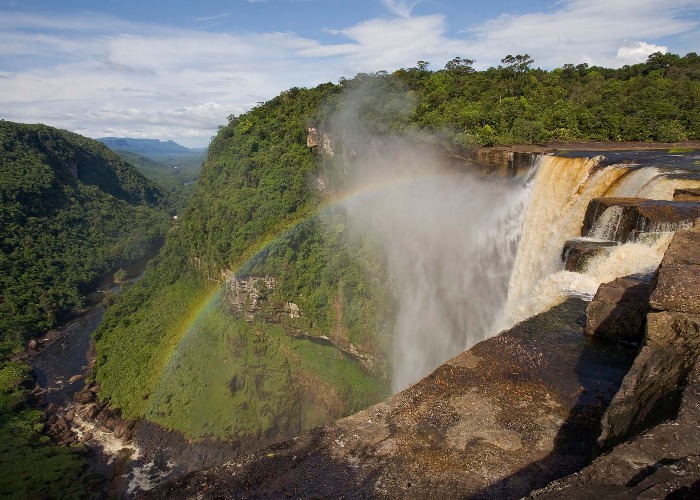
Unspoilt by development, Guyana is a dream destination for nature-focused getaways.
With only around 3,000 tourists a year – about the same that Machu Picchu gets in one day – Guyana might seem like an unusual destination for a trip. Yet with record-breaking waterfalls, opportunities for unique wildlife encounters and lush virgin rainforest, Guyana is a must-visit for adventurous nature lovers.
Spot the giant anteaters in the Rupununi Savannah
Native to Central and South America, the giant anteater is one of Guyana’s most impressive mammals. Already considered extinct in a number of neighbouring countries, the relative lack of development in the Rupununi Savannah means that sightings are fairly likely.
Adults can grow up to seven feet (2m) long and females have offsprings once a year and can occasionally be seen carrying their babies on their backs. Wildlife tracking on foot is possible in Guyana and with a local guide you can have some close wildlife encounters without disturbing the animals in their natural habitat.
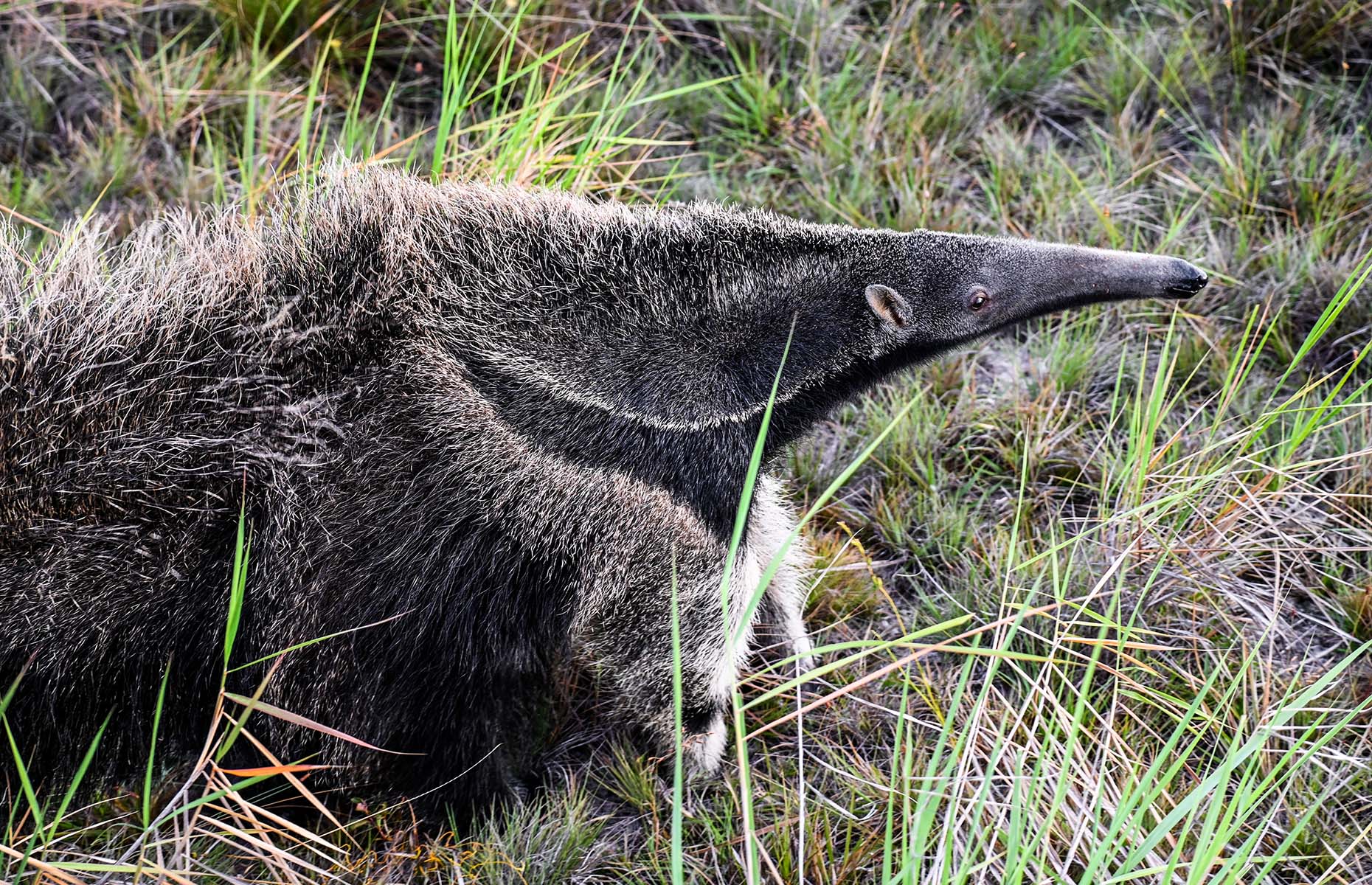 Courtesy of Alex Outhwaite
Courtesy of Alex Outhwaite
Watch the Victoria amazonica lily bloom
Named after Queen Victoria, the Victoria amazonica is a water lily that's famous for its giant leaves, which grow up to 10 feet (3m) in diameter. Native to Guyana and tropical South America, the flowers bloom at dusk, taking around an hour until fully open.
The flowers start as white when they need to be pollinated and give off a scent that attracts beetles before turning a deeper pink after pollination. The large size of the leaves blocks sunlight, meaning algae can’t grow beneath them, while the leaf itself is so strong it can hold the weight of a baby.
Only possible to view by boat, the blooming is a beautiful natural performance to observe. Karanambu Lodge – visited by David Attenborough – offers evening boat trips on the Rupununi River to the lily pond areas. You might even see snakes and caiman on the return ride.
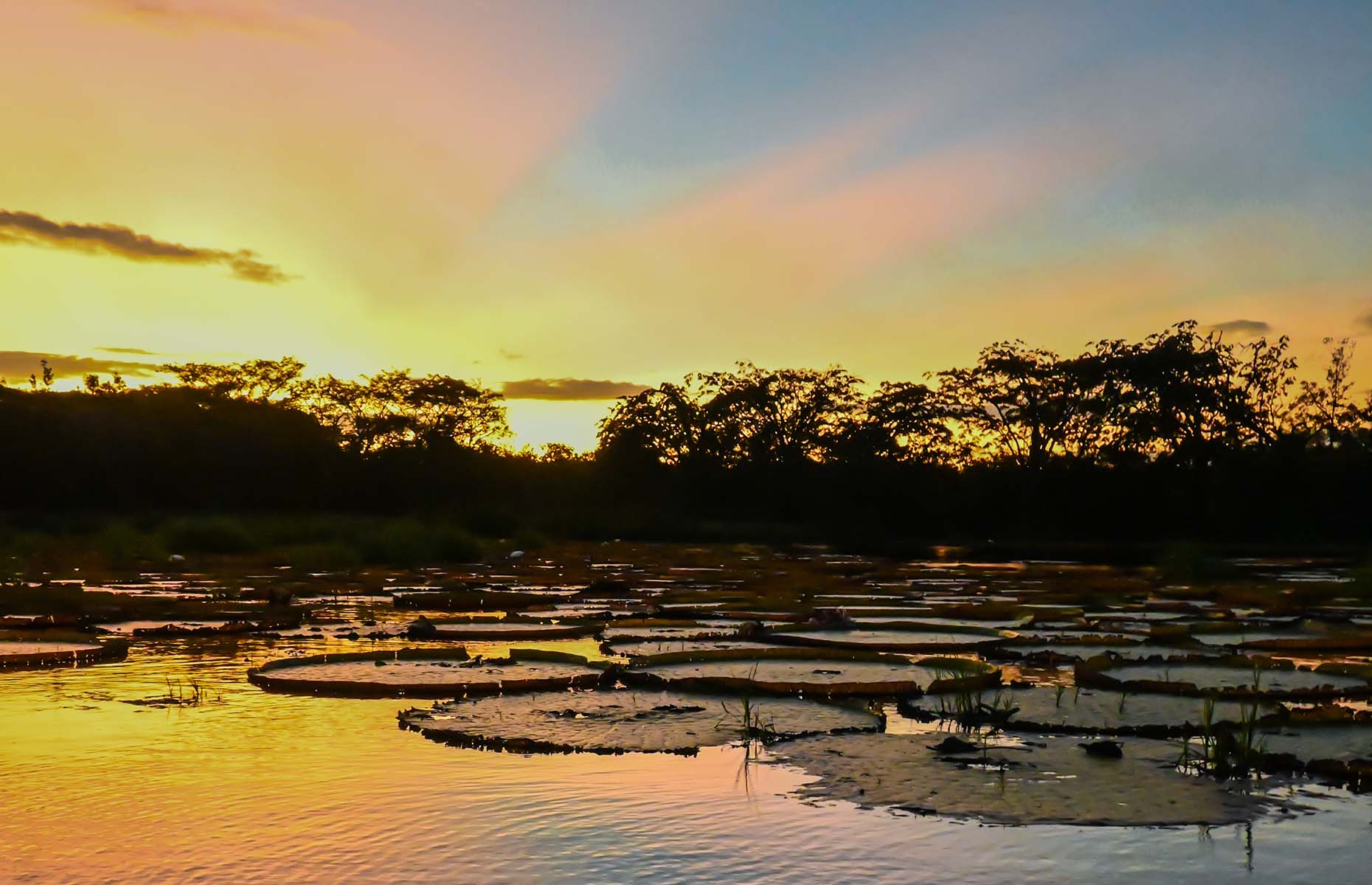 Courtesy of Alex Outhwaite
Courtesy of Alex Outhwaite
READ MORE: Mother Nature's greatest spectacles
Climb Barawatau Mountain to see the historic petroglyphs
The Rupununi Savannah is divided by the Kanuku Mountains and the area is defined by a number of high rocky outcrops. Stunning nature aside, the mountain also contains three petroglyph sites, dating back to over 6,000 years ago. As yet undeciphered, the rock carvings are believed to have come from one of the tribes inhabiting the region. In Guyana today, Amerindians (members of Indigenous tribes in Guyana) make up nearly 10% of the population.
Partially hidden by overgrowth and in difficult to reach areas, it’s necessary to travel with a local guide to visit the petroglyphs. Rupununi residents also have their own interpretation of the carvings, including one believed to be a map of fishing spots on the river. Hiking to see these ancient marvels is an incredible opportunity to observe a part of ancient history while taking in the views of the rugged surrounding landscapes.
 Courtesy of Alex Outhwaite
Courtesy of Alex Outhwaite
Bird watch on the rivers and in the south savannah
With 784 confirmed species of bird in Guyana, the country is one of the top places in South America for keen birdwatchers. The savannahs of southern Guyana are home to the critically endangered red siskin as well as other remarkable birds, including the harpy eagle and the white-throated kingbird. Another possible sighting is the bright orange cock-of-the-rock with its large fan-like crest which almost entirely covers the bill of the male.
Close to Georgetown on the Demerara River – from where the sugar gets its name – a short boat journey along the mangrove lined coast will produce sightings of scarlet ibis and painted parakeets. Even for those not so clued up on bird species, a day out with a guide will undoubtedly produce so many sightings you won’t be disappointed.
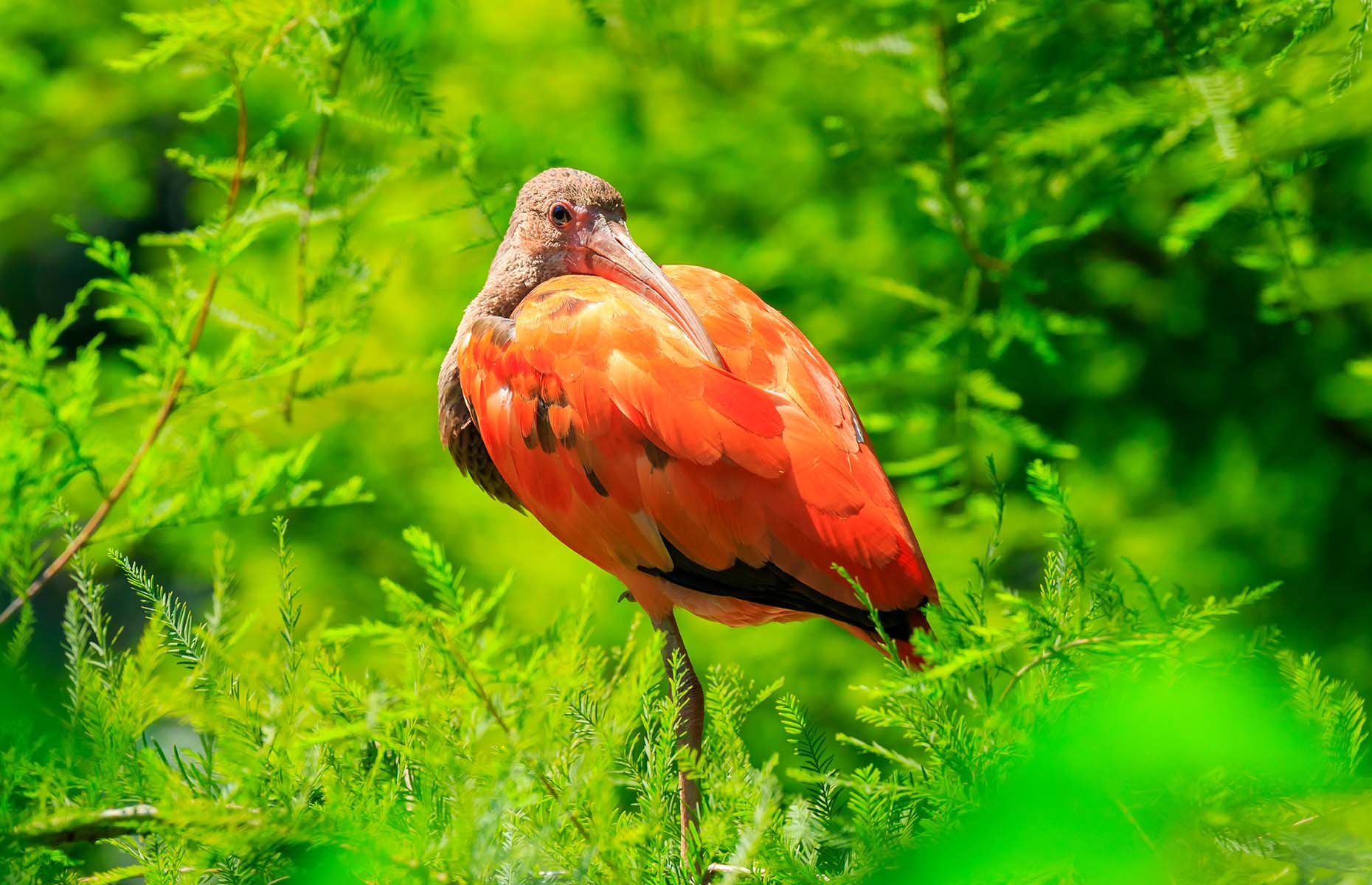 Sander Meertins/Alamy Stock Photo
Sander Meertins/Alamy Stock Photo
Visit National Park in Georgetown to see the manatees
Guyana’s capital, Georgetown has a small, grassy urban park near The Sea Wall, a 280-mile (450km) seawall stretching along much of Guyana's coastline, that's popular with joggers, kite flyers and picnic groups. The park is also home to an aggregation of manatees in the park's large shady pond watched over by jacanas and macaws.
The manatees were introduced here in 1885 and there is understandably some debate as to whether introduced animals and birds count as completely wild or pseudo-wild. Nevertheless, there are at least six manatees living here and they surface regularly to consume the vegetation. Although generally these gentle animals like to keep to themselves, they do seem to play together and it’s good fun listening for the grunts and squeaks as they splash in the water.
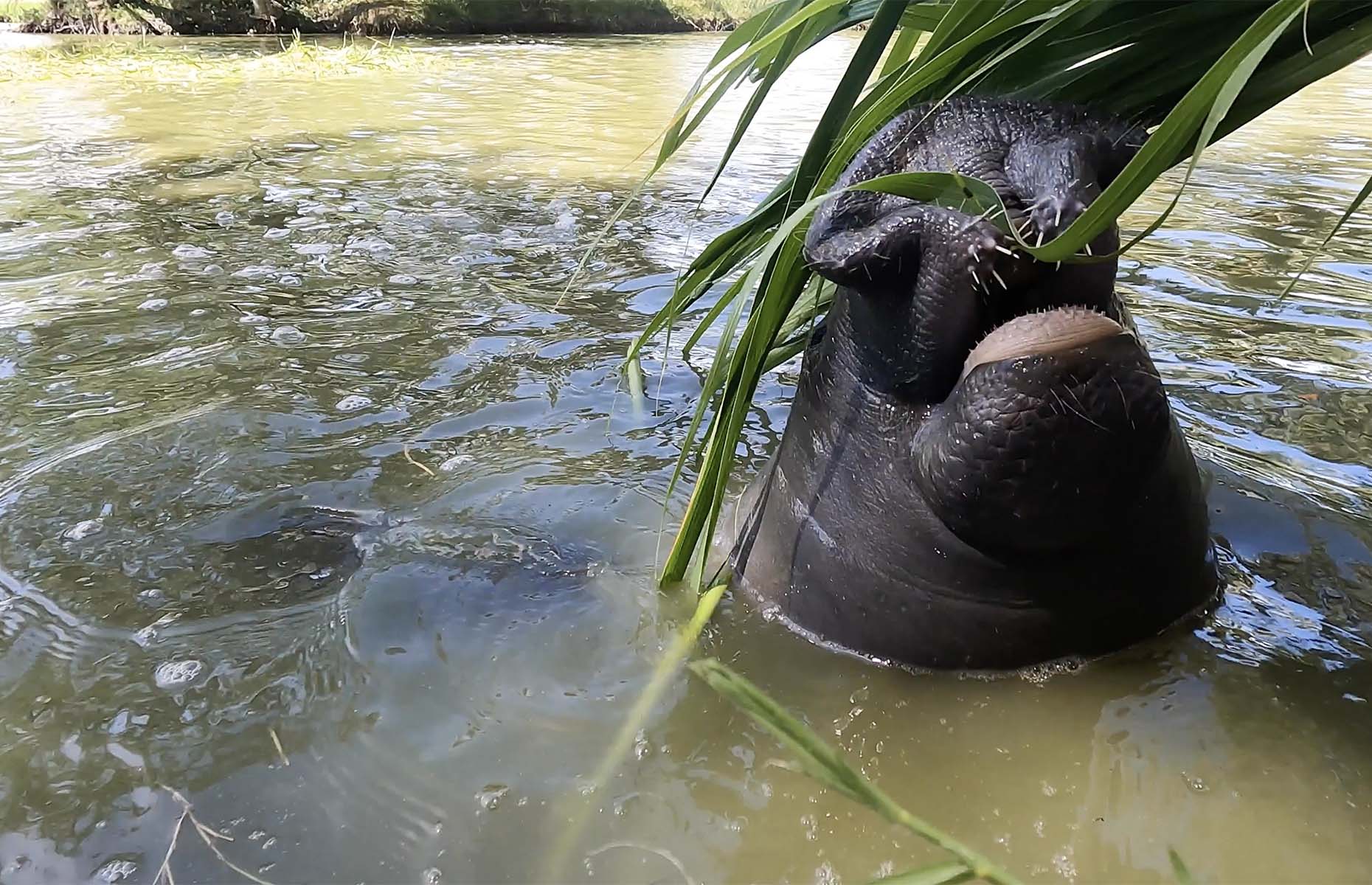 Courtesy of Alex Outhwaite
Courtesy of Alex Outhwaite
Take in the view at Termite City
The Central Rupununi Savannah is home to an area known as Termite City as it's made up of thousands of termite mounds, with some as high as 10 feet (3m). Spreading out over a few miles it’s an incredible sight to behold with the huge and unusual shaped mounds casting unique shadows as the sun sets. It’s a short drive from Waikin Ranch and it is possible to arrange a visit in a 4x4 for sundowners.
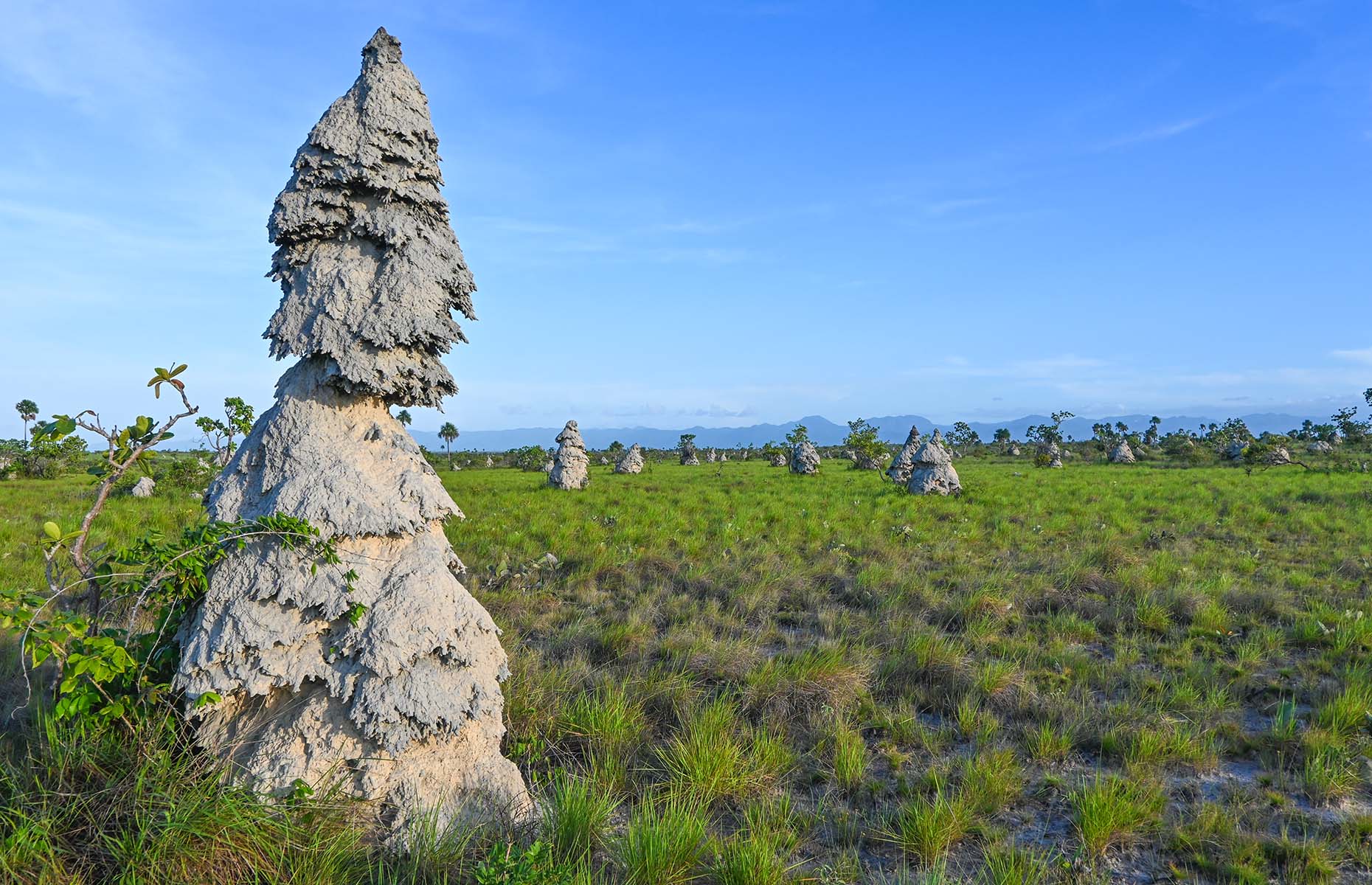 Courtesy of Alex Outhwaite
Courtesy of Alex Outhwaite
Visit Kaieteur Falls
Guyana is home to the world’s largest single drop waterfall, which is probably also the country's most famous sight. Located in the Amazon on the Potaro River, Kaieteur Falls is around four times the height of Niagara Falls, topping out at 741 feet (226m). It’s a tough multi-day hike to access on foot so most visitors come by chartered plane from either Lethem or Georgetown, which includes a spectacular flyover to view the breathtaking falls surrounded by mist from above. With drone photography not allowed at the falls, it’s one of the only ways keen aerial photographers can capture a shot from above.
Once on the ground, there are a number of viewpoints of the waterfall from different angles, including one called Rainbow Viewpoint, where you’re almost among the spray. As visitor numbers are much lower than at other world-famous waterfalls, such as Victoria Falls or Foz do Iguaçu, at some spots you’re likely to have the view all to yourself.
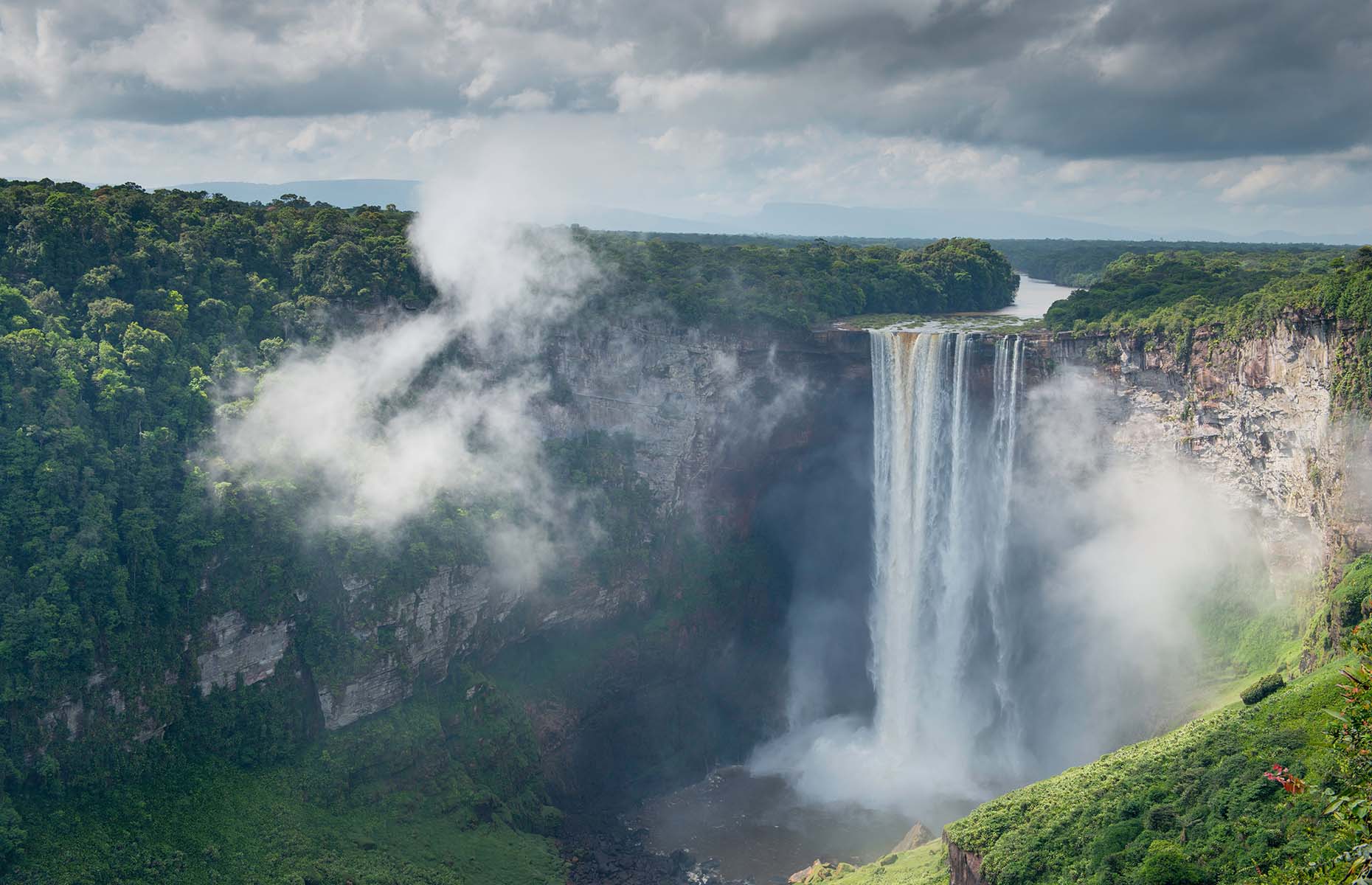 Tom Till/Alamy Stock Photo
Tom Till/Alamy Stock Photo
Stay at a rural ranch in the Rupununi Savannah
Southern Guyana has limited options for accommodation, but those that do choose to stay there are treated to pristine eco lodges complete with natural swimming ponds, locally grown food and knowledgeable owners.
A top choice is Wichabai Ranch where you can stay in one of the four wooden cabins on stilts, with private balconies overlooking the mountain range. During the day activities include horse riding, canoeing on the Rupununi River or learning the skills of the vaqueros (horse-mounted livestock herders). At night, a few local rums later, you’ll be treated to the dance of the fireflies as you lie in bed.
As the ranches like Wichabai are owned by Guyanese families who have lived in the region for generations, their knowledge of the local wildlife and vegetation is unbeatable and makes for a fascinating learning experience.
READ MORE: 50 essential travel experiences in South America
Lead image: Lee Dalton/Alamy Stock Photo
Comments
Be the first to comment
Do you want to comment on this article? You need to be signed in for this feature